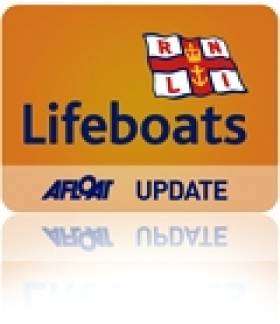Displaying items by tag: Michael Lane Walsh
Ballycotton Lifeboat Honours Mechanic
Michael has become well known throughout the RNLI community over the years and the 29 January was marked on several calendars for quite some time as the date they would be travelling to Ballycotton to help celebrate the retirement of an exceptional, modest man.
Lifeboat personnel travelled from RNLI lifeboat stations in Ballyglass Co. Mayo, Achill Island, Courtmacsherry, Rosslare, Helvic and Youghal joining with Ballycotton lifeboat members, family and friends to help celebrate a man's commitment to a job he treated more as a vocation than a job. The Training Divisional Inspector, Owen Medland and Divisional Base Manager, Derek Potter from the RNLI head quarters in Dublin attended and spoke of their long association with Michael Lane Walsh. Several presentations were made with the good wishes from everyone present, along with those from lifeboat crewmembers who were unable to leave their stations. Derek Potter told those present that normally they would be presenting a long service vellum to the retiree but in Michael's case he is not finished yet. For the time being he will not be hanging up his life jacket but will keep it in readiness for the next time someone calls for help from the Ballycotton RNLI lifeboat.
Related Safety posts
RNLI Lifeboats in Ireland
Safety News
Rescue News from RNLI Lifeboats in Ireland
Coast Guard News from Ireland
Water Safety News from Ireland
Marine Casualty Investigation Board News
Marine Warnings





























































